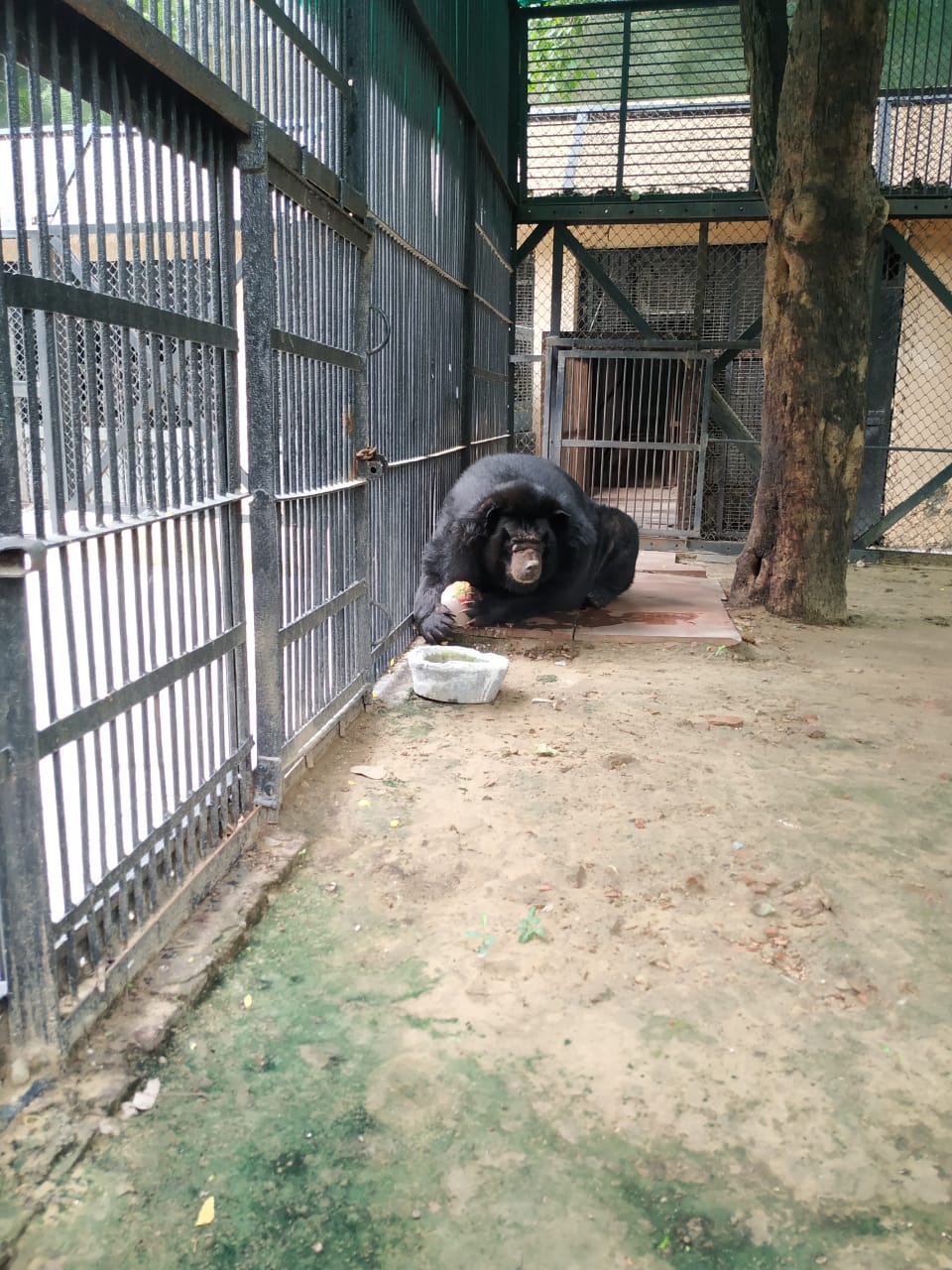
After over three years of being left inside a cage, an ageing Himalayan black bear in the Delhi Zoo could be out in the sun to a special enclosure made for it, called a kraal.
The 35-year-old female bear was thought to be blind and hence authorities believed she would hurt herself if sent out into the open arena – fall into a moat. So, the solution? Leaving her inside the night pen, for years.
The tragedy of not being able to see very well, and then being deprived of even fresh air can only be imagined. Us humans, as we lived the Covid-19 induced lockdowns inside our homes, got only a small sense of how it must be for the zoo animals.
This bear, though, was bereft of sunshine, rain, sight and sounds. Delhi zoo director, Ramesh Kumar Pandey says if there’s one thing which is close to his heart is “to make the oldie come out into the open space and enjoy the kaccha land”.
It was decided to build a kraal space outside for the bear, where she could go through a guided path. “When I came, I decided that even if the animal cannot see, let’s make a guided kraal with a wooden plank platform. The animal was in the cell for many years. I thought we should try to give her some sunlight, some kachha land, some rain. She had lost her fur and now it’s back, she enjoys herself in the kraal”.
“Recently when the heat waves were going on we were giving ice-cubes, we also gave her fruit ice cream, they enjoyed it. Sometimes we give honey comb, or hide food.”
(Cover: The Himalayan Bear // Credit: Sashikala VP)
Rival leagues trigger players’ suspensions and a legal battle in Indian golf, for now
Former Delhi CM Kejriwal criticises Centre, Delhi govt over worsening air pollution, alleges AQI manipulation
Delhi Police raids Nangloi unit producing fake engine oil, seizes over Rs 1 crore worth…
Mukesh Sharma reimagines digital components as living matter in his solo exhibition ‘Decoding Digital DNA’
Nine accused were arrested in coordinated raids as police uncovered organised networks supplying mule bank…
Nearly 1.57 lakh PUC challans issued in two months as Delhi steps up GRAP enforcement…